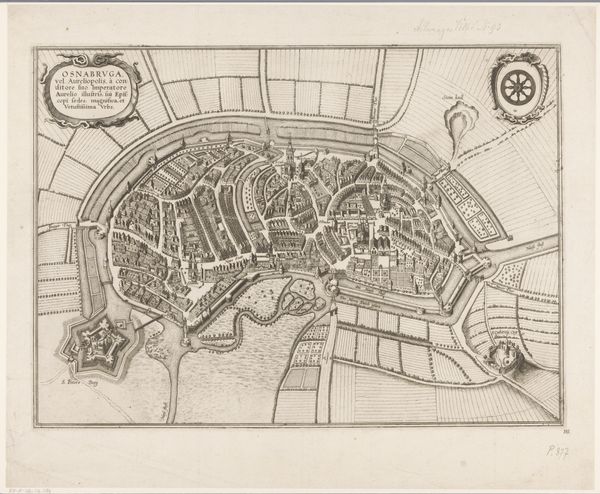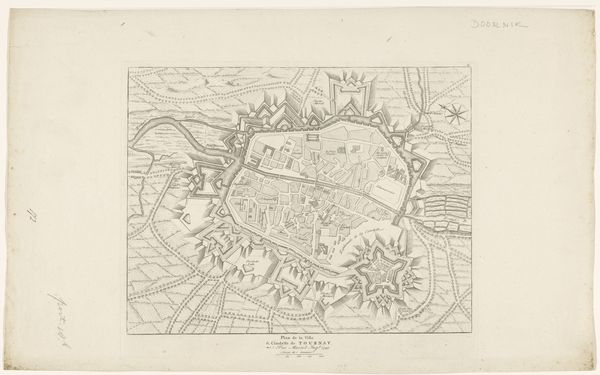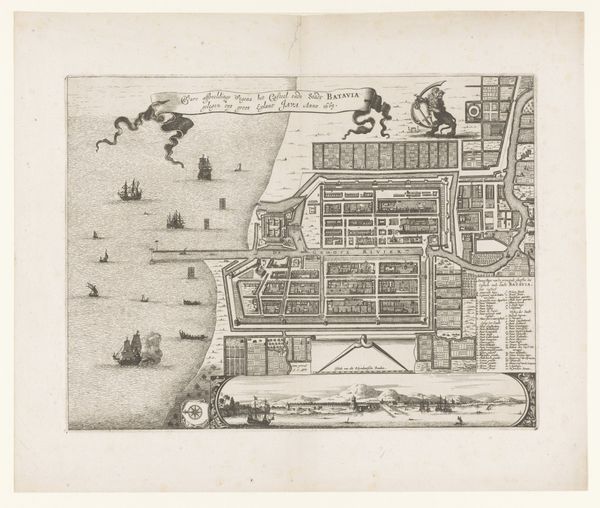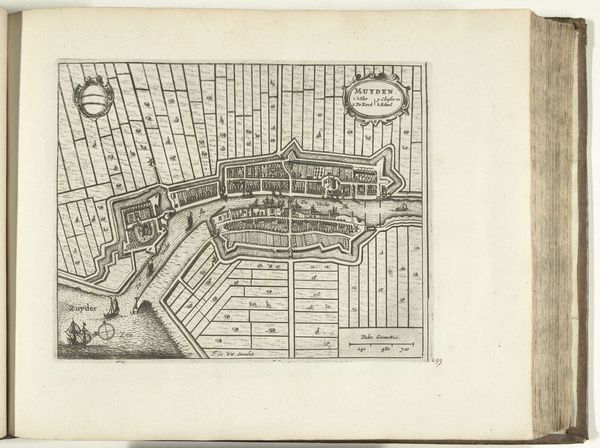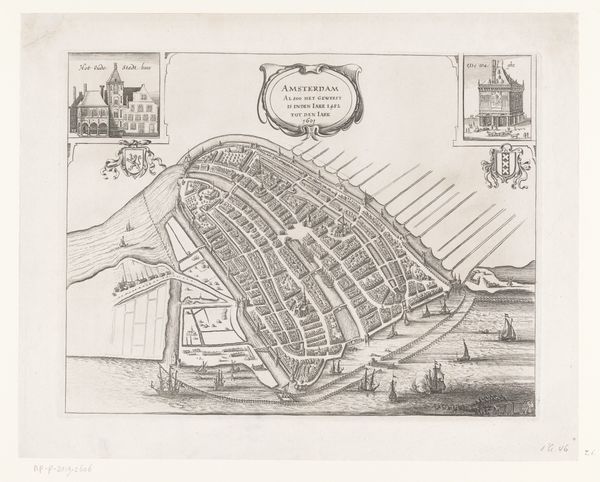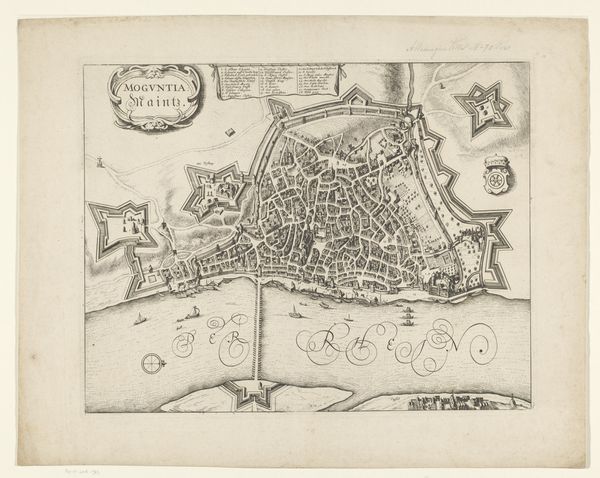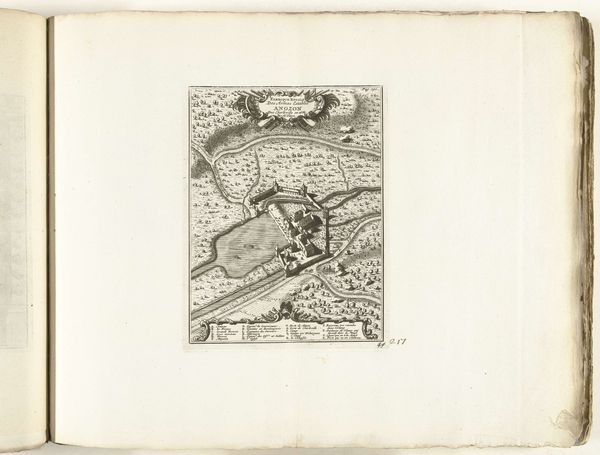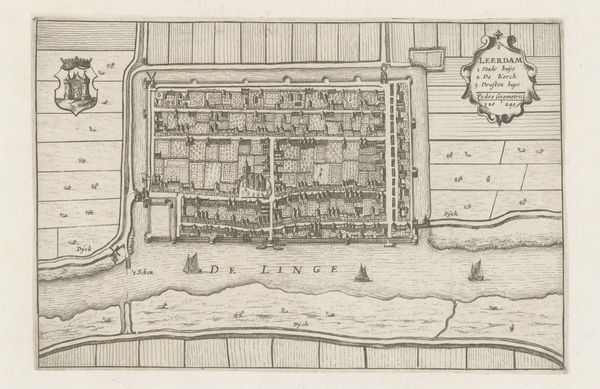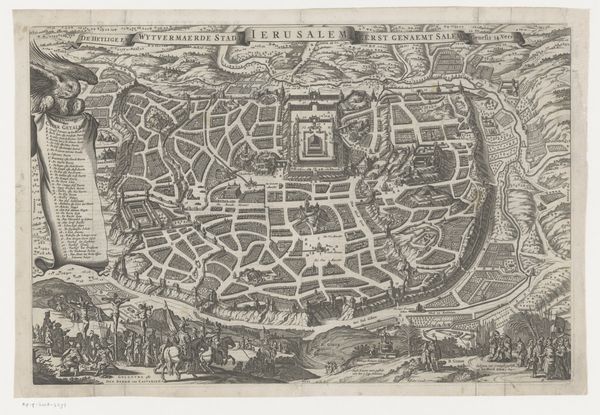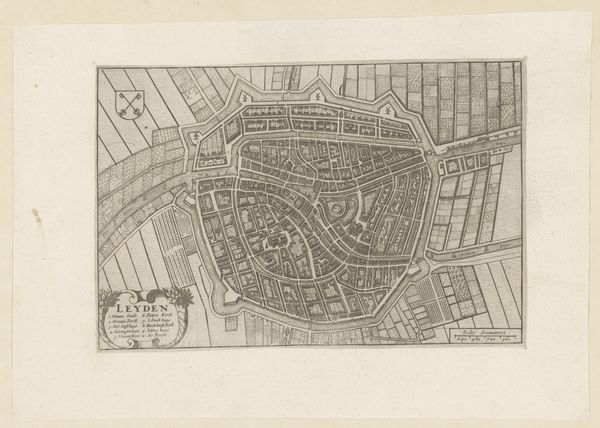
drawing, print, ink, engraving
#
drawing
#
dutch-golden-age
# print
#
old engraving style
#
landscape
#
ink
#
geometric
#
line
#
cityscape
#
engraving
Dimensions: height 213 mm, width 260 mm
Copyright: Rijks Museum: Open Domain
Curator: Here we have an anonymous engraving, titled "Plattegrond Schoonhoven," placing it somewhere between 1657 and 1704. It's currently part of the Rijksmuseum's collection. What are your first thoughts? Editor: I find this wonderfully organized. It reminds me of architectural renderings where you want to show the precise arrangement, except here it's the entirety of a small town. The detail of urban design from that era… amazing. There’s something appealing about the calm geometry too. Curator: Indeed, cityscapes were becoming increasingly popular during the Dutch Golden Age. This piece speaks to the rising merchant class and their pride in their urban spaces. Maps weren't just navigational tools; they were status symbols and markers of civic identity. Editor: So it’s a carefully controlled world view, projecting the Dutch merchant’s vision, isn’t it? Look at how controlled nature is, segmented in a series of cultivated, enclosed allotments—and then on the left is the vast and undefined open river. Maybe that contrast expresses the risks and potential fortunes of commerce? Curator: A persuasive point. The city itself is bounded with clear fortifications—a sign of their investment but also their perceived vulnerabilities. Think about the political climate of the time; the Dutch Republic was still solidifying its independence, making such visual assertions of control vital. Editor: But also maybe the Dutch just like keeping things nice and organized, and were super into urban planning and real estate! Seriously though, those cultivated parcels *are* appealing to my contemporary eyes—maybe because we all share a little desire to cultivate our small plot of paradise! It's not too far a psychological leap from garden gnomes and topiary, is it? Curator: I can see how those impulses might connect. In that sense, these images are far more than objective records. They participate actively in shaping perceptions and social behaviors, contributing to the period's burgeoning sense of self. What's the long-term effect of representing reality in this particular way? Editor: I don't know about shaping social behavior, but maybe a nice bit of controlled perspective has an emotional component that affects all artists to this day. These old engravers had something… and even though I look at work every day, seeing such detail always sparks ideas! Curator: A perfect demonstration of how historical artworks continue to speak to us and generate new artistic interpretations centuries later. Editor: I'll never look at a map the same way again. It has been thought-provoking—thank you.
Comments
No comments
Be the first to comment and join the conversation on the ultimate creative platform.

